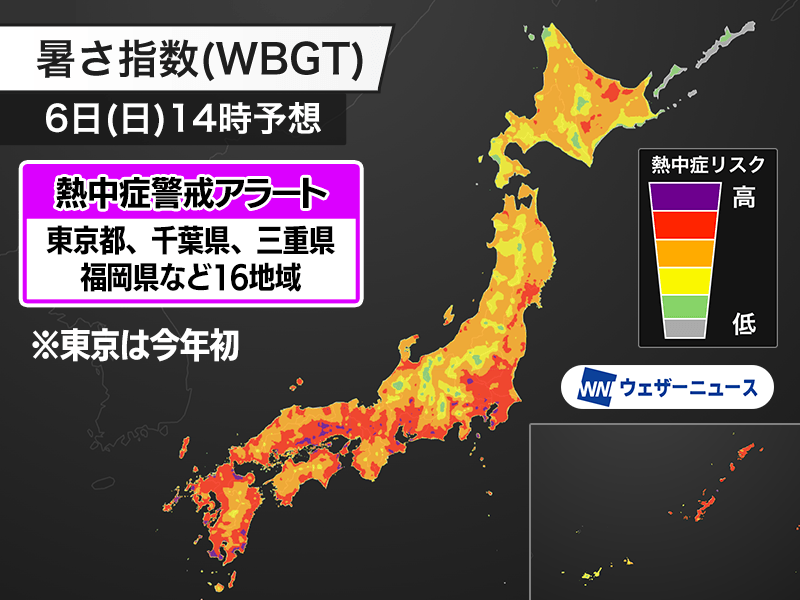
The Ministry of the Environment and the Japan Meteorological Agency have issued a heatstroke warning alert for July 6, covering 16 regions in Western and Eastern Japan, including Tokyo, for the first time this year.
The affected areas will experience high heat, with a significant risk of heatstroke. Residents are advised to stay hydrated, avoid prolonged outdoor activities, and use air conditioning indoors. It’s essential to take proactive measures to prevent heatstroke.
Alert Areas:
- Tokyo
- Chiba
- Yamanashi
- Mie
- Tokushima
- Kagawa
- Saga
- Miyazaki
- Oita
- Fukuoka
- Nagasaki
- Wakayama
- Shimane
- Hiroshima
- Kumamoto
- Kagoshima (except Amami Islands)
Temperatures will rise rapidly, with dangerous heat expected throughout the day, especially in Western Japan, Kanto, and Tokai regions. The heat index (WBGT) will also be high, indicating an increased risk of heatstroke. Be sure to use air conditioning, stay hydrated, and take in salt if necessary. Adequate sleep and nutrition are also important to prevent heatstroke.
Even if a heatstroke alert is not issued, areas with temperatures over 30°C (86°F) or 35°C (95°F) are expected, so stay informed and take precautions.
What is the Heatstroke Alert?
The heatstroke warning system replaced the former high-temperature warning and began national operation in 2021. Alerts are issued when the heat index (WBGT) reaches dangerous levels, specifically over 33, indicating significant risks for heatstroke.
What is the Heat Index (WBGT)?
The WBGT measures the heat stress on the human body, taking into account factors such as temperature, humidity, sunlight, radiation, and wind. It’s a more accurate predictor of heatstroke than temperature alone. A WBGT at or above 33 is considered dangerous, and physical activities should be avoided.
by MagazineKey4532
